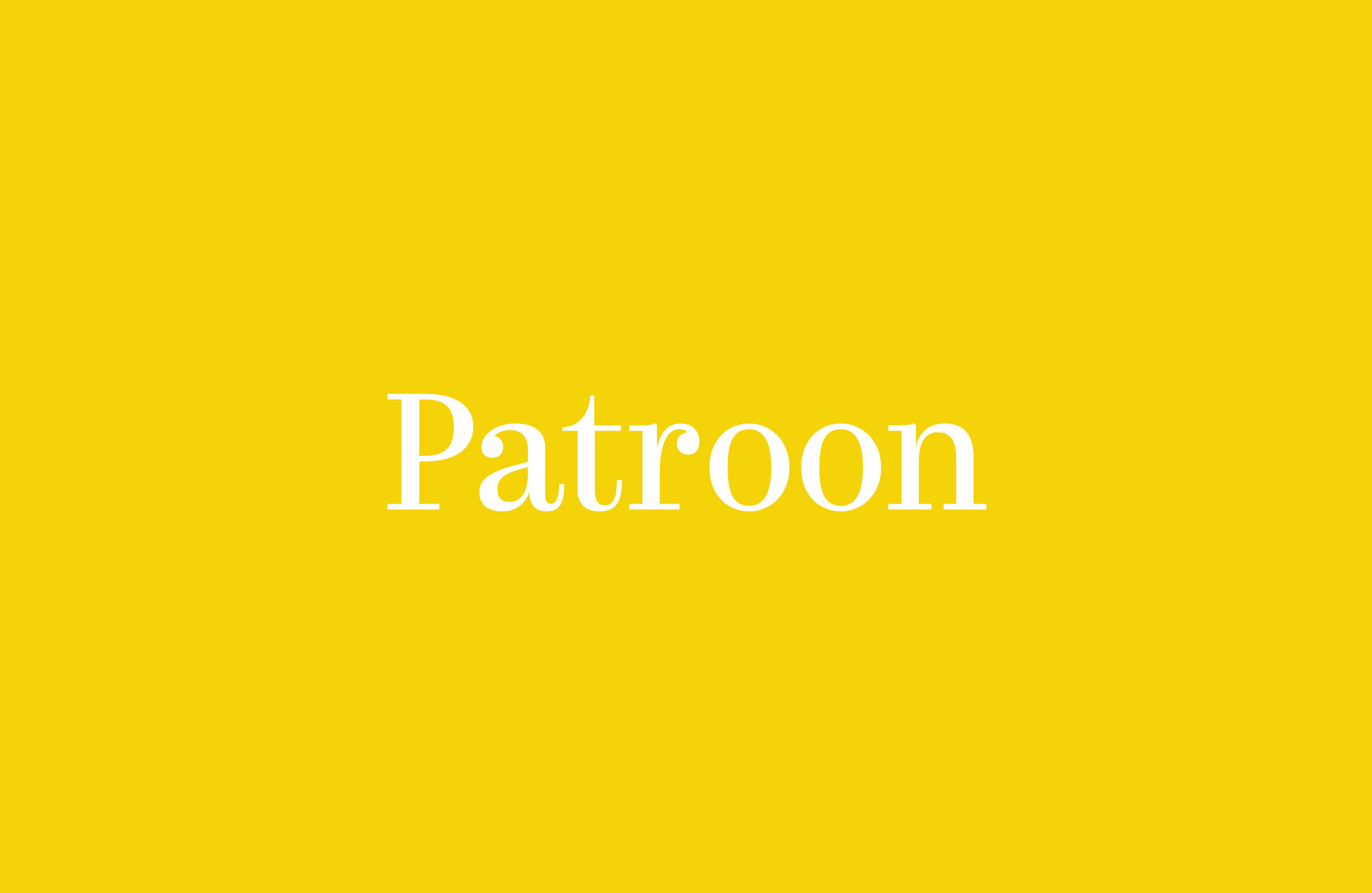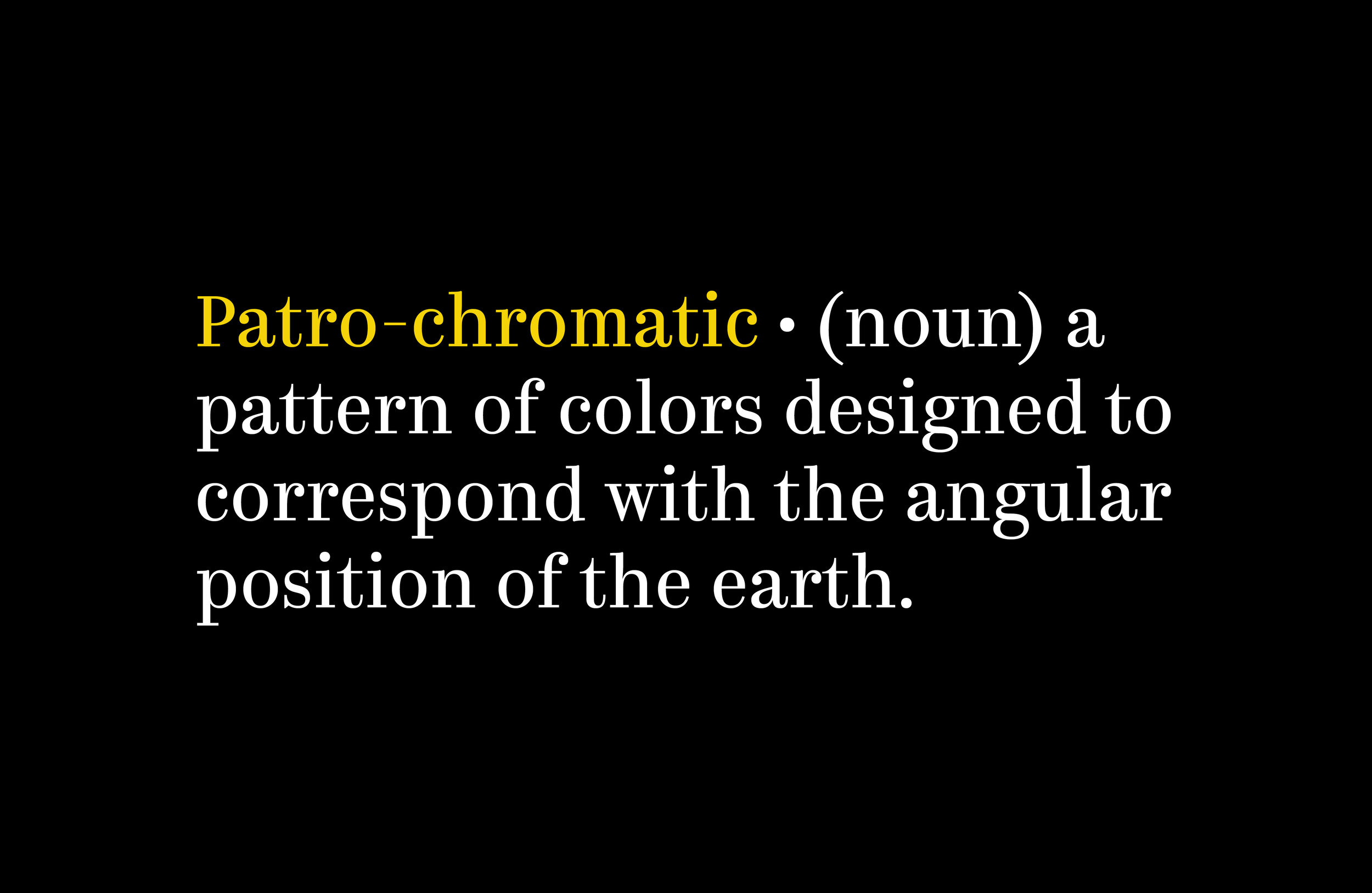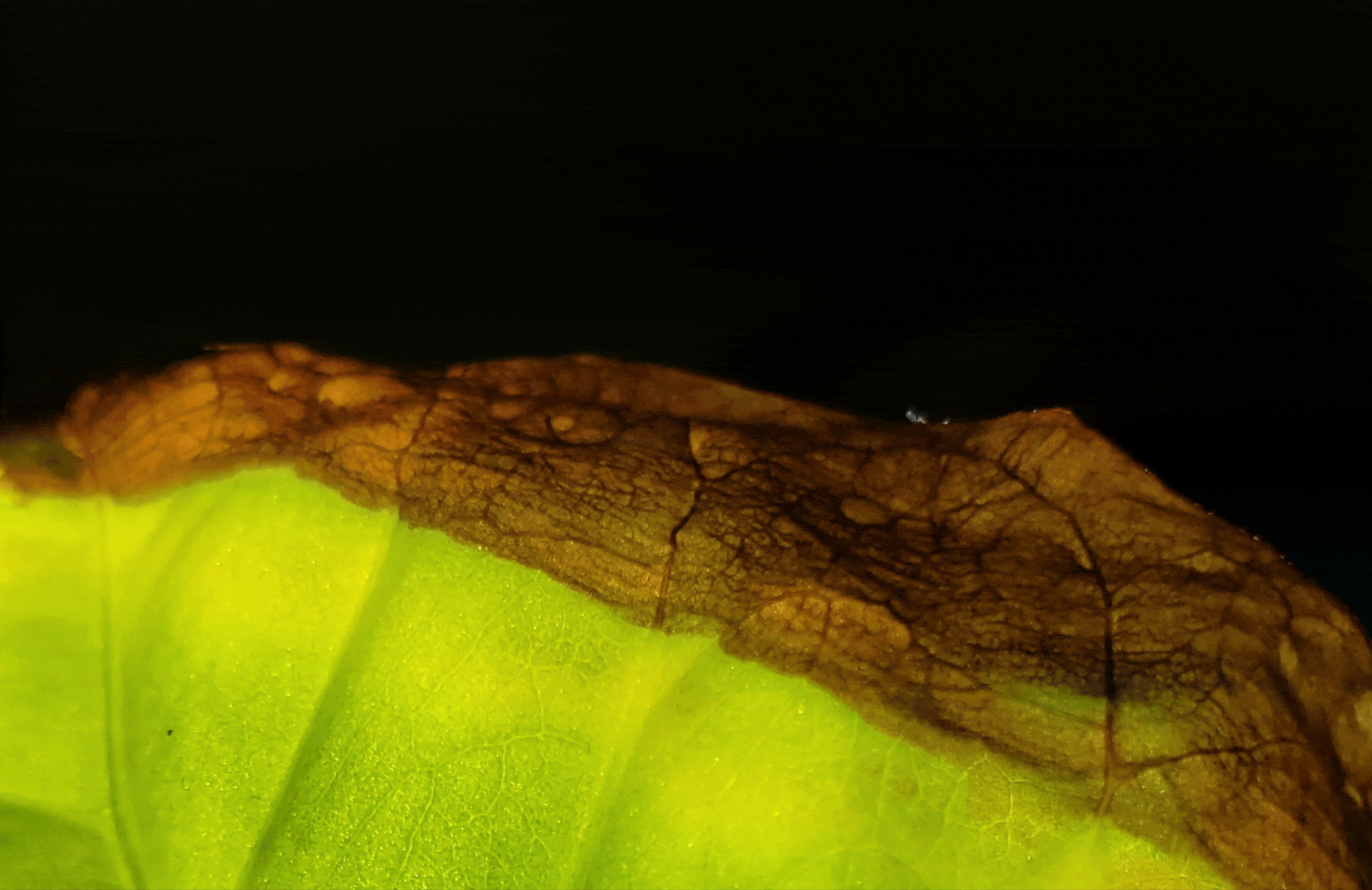
Patroon - Colour Harmony
Self Research
Colour Harmony
Data Visualization - Colour
Research & Designer
Brief
Tell me something new about colour.
Idea
I was inspired during my reading from Josef Albers on his idea and practice of colour. I harped on the idea that “Colour selection can be pre-selected before interaction of our human eye”. That lead me to the question, ”Is there a number of systems that colour can coexist in?”.
Define
After researching, there is a number of systems that coexist within colour. And I wondered, does the tilt of the earth have something to do with what colours we see each minute, hour, and day? With a little bit of math and colour theory, I was able to create a new colour harmony called, Patroon.


Patroon
The first system came from the 23.5˚ degrees, where the earth which is tilted. I found it’s complimentary (opposite) degree which is 113.5˚. After that, you take a 90˚ angle from the first degree which is 23.5˚, find that degree and then find its opposite using the equation given. What you have left is a new colour harmony based from the degree tilt of the earth.
Lateral Patroon
For this next colour harmony, it was based from the previous equation that was created. With this process, I started again with 23.5˚ again but this time, the second degree (66.5˚) came from the subtraction of 23.5˚ from the 90˚ angle. Then finally finding the complementary of the 90˚ degree angle which is 270˚. Making it the second colour harmony called, ‘Lateral Patroon’.
Data
Going back to one of Josef Albers was of viewing of certain colours, I wanted to match up how some of the colours that came from Patroon compared to other colours based on the primary swatch. With this colour system in place, I am able to make a variety of unique colours that have not been identified before. I also made a name for each colour to identify the origin, the hex code and if it comes from Patroon or Lateral Patroon. This offers those interested in a bespoke colour combination an opportunity to be one of the first to bring it to the market.
Website
The website is called melody and has all the basic colour harmony systems that includes the Patroon and Lateral Patroon system. You will be able to interact with the colours and see how similar and different the colour harmonies are when choosing a distinct colour.
Resources
Colours and Maths, Convert A Color, Physics-Color, Color Matters, The Mystery of Color, Josef Albers: Interaction of Color.
Go Big!
In the earlier part of the project research, I understood how color could play on a planetary angle but didn't consider the function of color. I had to ask the fundamental question, "What is colour?"
To find the answer, I went to the source of color... light. To get all the colours of visible light, I discovered for myself that the Sun is in fact white. Knowing this fact allowed me to understand the complexities and what we see, when it comes to seeing natural colour. Basically, colors are wavelengths of light that are visible to the human eye. Much like ripples, they can have a different amount of energy based on their wavelength. Red, at 635 nanometers (nm) (635 billionths of a meter) and higher, is the colour with the longest wavelength. Whereas, blue and purple, around 400 to 500 nm, have the shortest.
When sunlight kisses the Earth, the light bounces off at wavelengths corresponding to various colors - our eyes pick up the reflected colours. The first process is called Rayleigh Scattering, which is the elastic scattering of light that takes place in the atmosphere. After light gets through the atmosphere, the absorption and reflection process continue to other objects. A colour is simply just the reflected light from the object.
Illustration of the sun sending light towards earth.
A chart is plotting the frequency of the wavelengths for various colors (in nm). Note reds have the lowest frequency (largest wavelength), while blues and violets have the highest frequency (smallest wavelength).
Go Small!
An object's natural colours is determined by the structure of the chemicals that is embedded within. The most common molecules in nature are carotenoids, chlorophyll, and anthocyanin, and tannin. They are collectively known as pigments due to their color-producing properties and are responsible for various shades of orange shades, green, and purple, and brown.
In the image I've taken, you can see the pigment of green, with hints of yellow and brown. The green is from the chlorophyll molecule, which is the essential part of photosynthesis. You can also see the carotenoid, which is a hint of yellow, which shows either in the beginning stage of the leaf or towards the end.
This transition shows the final stages producing chlorophyll, which then moves into the Tannin stage. This is when there is no chlorophyll at all, and the leaf will make an abscission line, shedding inefficient tissues due to the lack of light.
Even Smaller!
Speaking on molecules, some can have color - much like the example of the shown leaf. But in most cases, molecules don't seem to reflect light that we can see, and some would reflect or emit light off a specific color. I found through Bohr's Model and Atomic Spectra that the atom's electrons can absorb energy from heat, electricity, and light. The animation shows there is the nucleus in the middle and the electron goes around. As the electron consumes energy, it goes up an energy level and goes down or "ground state," which emits light due to energy loss.
The Next Steps!
Clearly, colour can coexist in different systems. But it's always based on the energy and the atom's electron that receives the energy, time, and position of this planet. Light splits into different wavelengths within our atmosphere and its atoms. If I used the patroon and lateral patroon angles from my location, would it be possible to predict future colours appearing in the sky?... Could this be Colour Forecasting?
Further Resources
Libre Text, Dr. D. Coder, Science Line, Academo, Internet Archive




















